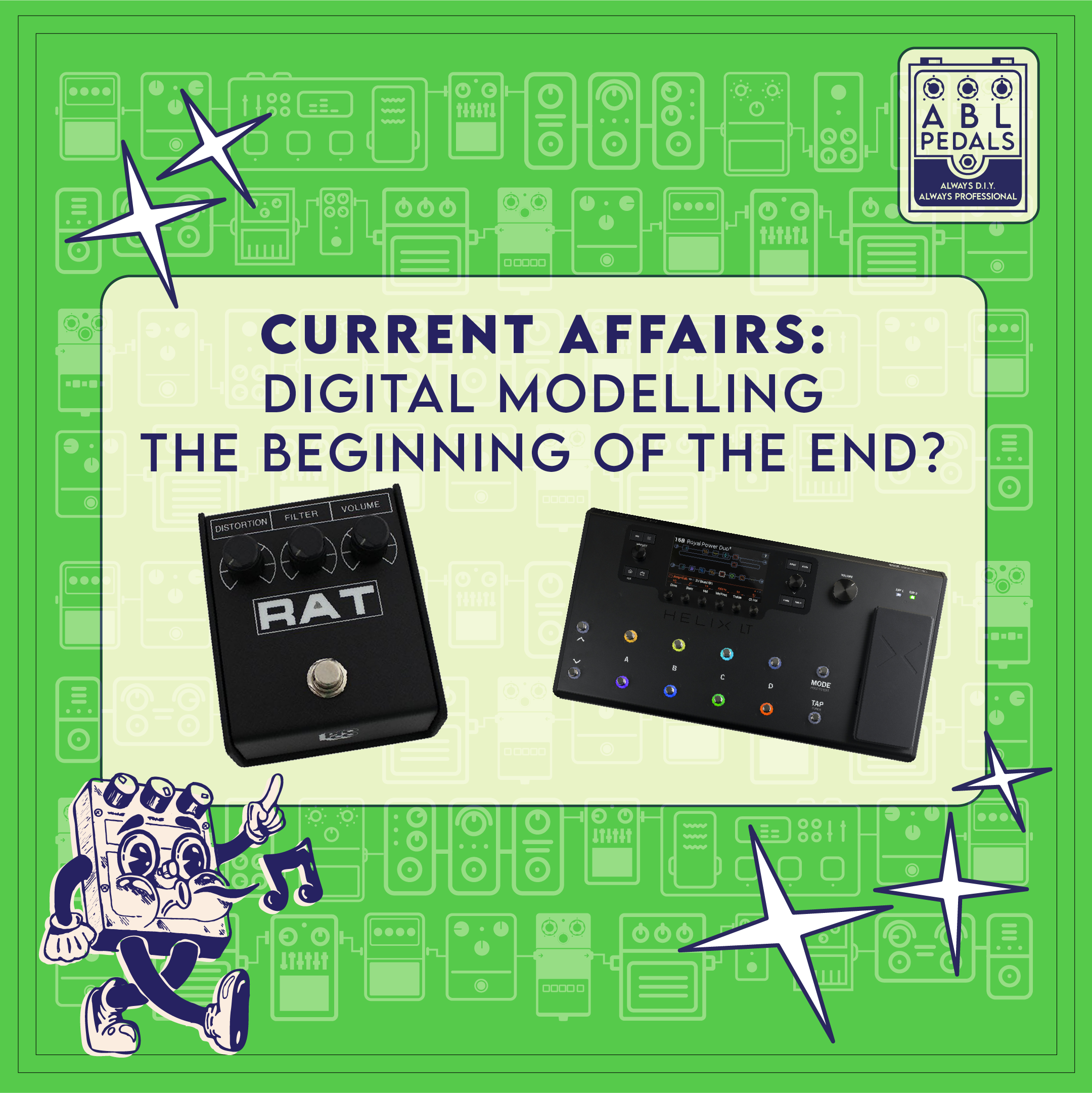Current Affairs: Digital Modelling – The Beginning of the End?
Unless you’ve been living under a rock over the last few years, you can’t deny the rise in popularity of digital modeller set-ups. From the Line 6 Helix, Fractal’s Axe-FX, Kempers... There’s a lot of choice out there! Admittedly when I started my guitar journey in the mid-00s these types of modellers were cool but left much to be desired overall. The sounds were fine but not mind-blowing and the menus and user interface were confusing at best. The consensus for many was “digital sucks!”
However, in the last 20 years or so technology has moved on leaps and bounds to the point where nowadays many players only run a digital modeller. In today’s Current Affairs, we explore the pros and cons of running them vs a traditional pedal set-up and look into the future of guitar rigs.
Line 6 have been in the modelling game for years, and their newest Helix models certainly prove their popularity. (Image courtesy of Music Radar)
Digital modelling aims to digitally recreate guitar pedals and amps using all sorts of technology, including AI, DSP (digital signal processing) and a whole lot of software and programming! While there is a pretty steep learning curve to them, the results speak for themselves.
Advantages of digital modelling:
Flexibility: You can program patches upon patches of songs with different amp setups, effects and parameters for all aspects of your gig. Imagine being able to go from a sparkly Fender clean to a searing high gain sound, all at the touch of a button!
Portability: They’re lightweight and fit in a bag, just remember to take your guitar and your leads, and off you go!
Reliability: Plug it in, and it’s your sound, ready to roll! No more valves failing on you, tuning your set up to the room/the PA (well, not as much), inconsistencies between stage volume and what you hear on stage, or dodgy patch cables just waiting to break.
Disadvantages of digital modelling:
When they break, they break: I think even the most experienced techs would struggle to fix some of these units without information directly from the companies who produce them.
They are expensive: Okay, when you do the maths on digital modelling vs building a traditional rig bit by bit they save you money, but most are more expensive than the average guitar or amp.
They have a steep learning curve: While there is always a degree of learning when getting new gear, if you really want to dial in your sound, you better read the manual! Need to change something mid-gig? Forget it!
I was sent this gorgeous pedal board by a client a few weeks ago, featuring a few familiar pedals 😉
I don’t think I need to explain a traditional guitar/pedal set-up – I doubt you’d be here reading this post if you didn’t know about it. That being said, I wanted to show both sides of the argument.
Advantages of a more traditional/analog guitar set-ups:
Authenticity: While this is nit-picking to some, it’s worth mentioning that there isn’t a much better feeling than getting a valve amp cooking. And while technology is improving, these things haven’t gone away for a reason.
Repairability: Most analogue gear can be repaired, and in particular vintage gear is probably even easier to get repaired due to the way it’s built/designed.
You can try new stuff and swap stuff out easily: No downloading patches and dialling in the parameter. Simply put on your board, plug in and off you go!
Disadvantages of a more traditional/analogue setup:
Expensive: GAS (gear acquisition syndrome) is real! Yes, I’m sure if you’re reading this you know all too well that buying up pedals and swapping them out can be a bit expensive…
Gear gremlins: The classic tale: it works in the house, it works at practice, it works at soundcheck, but it comes to the gig and something doesn’t work! With a pedal board with an ex-amount of pedals going between your amp and your guitar, and a valve amp, there are a lot that can go wrong there…
Weight: Valve amp combos are not light, and the majority of venues are located either up or down a flight of stairs. While your drummer might be laughing at you, the idea of taking a modeller can seem pretty tempting when you try and lug a Fender Twin anywhere these days.
The solution:
Honestly, at this stage do what works best for you! There is no right or wrong, and while modellers seem to be leading the herd in today’s guitar environment, valve amps haven’t gone away in this time. I’m sure when solid-state came in, it was the same, but yet, most guitarists and amp companies are still turning to what is now over 100-year-old technology!
Thankfully, for the most part, this new technology is good enough to stand by the older tech, so a hybrid approach is being adopted by many. The JHS Show recently revealed they’ve been using Kemper profiles of amps for their pedal videos and I’ve watched umpteen rig rundowns where guitarists have a board that is being fed to an amp modeller to go through the PA. On the higher end of touring it's budget-dependent, and at the more amateur/hobby end of the spectrum, it boils down to what you’re able/willing to carry. Ultimately, using the gear you love will make you play best!



